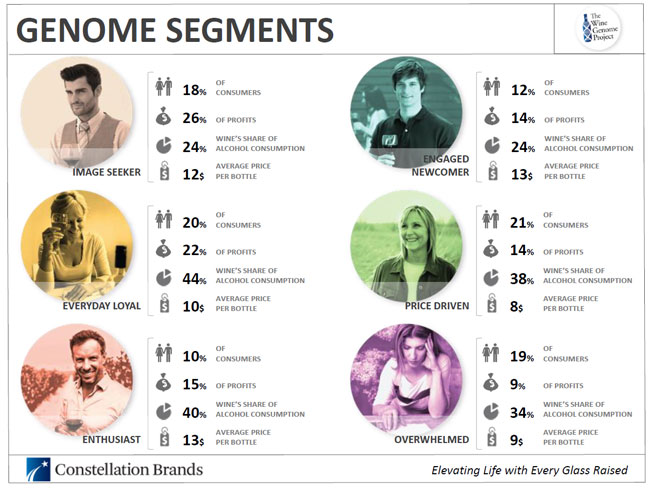I’m skeptical of old-fashioned segmentation: women, age groups, income levels. With so many data streams accessible and the ability to glean extensive information about consumers, we have an opportunity to reassess how we categorize affinity groups. Emerging fields like ethnography and neuroscience add layers of intelligence and new ways of approaching segments that can guide brand managers and marketers. I wrote about this in 2013 following a conference that I co-created to explore marketing themes in the wine industry, The Exchange. One example: analyzing how mothers and daughters shop together, a prevalent occasion in the Latina community, can enhance how beverage alcohol brands market to this group of potential consumers. That segment can’t be explored by broadly looking at women and wine.
Is simply halving the population enough of a segment to shed light on how to go to market? Can we glean any actionable information from this? The short answer is that it depends.
Last week, I attended a Wine Market Council research conference. The Wine Market Council has been tracking annual wine consumer attitudes and behaviors for two decades and hosts two consumer research conferences each year, in New York and California, to present highlights from these research studies.
According to Nielsen, women control $4.3 trillion of the $5.9 trillion in U.S. consumer spending and account for 85% of all consumer purchases. There’s no doubt that women have increasing purchasing power. But what does this tell us about selling wine to women?
The Wine Market Council’s survey of female wine consumers, a study of more than 1,200 participants, was conducted in November 2015. They explored the self-reported purchasing patterns of women and what drives trial and repeat purchase. They also delved into wines specifically marketed to women and if the category resonates – with whom and why. Here are some key takeaways, as outlined by the Wine Market Council’s Director of Research, by Jennifer Pagano:
- Female wine drinkers were categorized in different groups: highly involved, regular wine drinker but not a hobby, and not very knowledgeable.
- Overall, nearly one-fifth of women are highly involved, meaning knowledgeable about wine, have an interest in the category, and/or consider themselves collectors.
- Highly involved female wine drinkers are mostly older Millennials (30-38 years old), and more often urban-educated professionals, and more ethnically diverse than the typical female wine drinker.
- Women are more likely to buy a wine they’ve never tried before based on the label when browsing, or based on a recommendation from friends, family, and off- or on-premise staff, rather than seek out a wine they’ve read about.
- Wines marketed specifically to women are most often purchased by Millennials and women who are regular wine drinkers who are not highly involved in the category.
- Women who purchased wines targeted specifically to women enjoy these wines because they like the way they taste, rather than because they have feminine labels or are geared toward women.
Other wine consumer segmentation studies that I’ve seen, like Constellation Brands’ Project Genome, The Evolution of the Wine Consumer, break consumer groups into more detailed segments (in this case, six) and look at behavior patterns rather than external markers (much in the same vein as this recent viral video).
For me, the value of segmentation is to unearth insight, which is by definition a deep understanding of a person or thing. This, in turn, can fuel intelligent decision-making and the ability to apply knowledge to shape one’s environment. Taking the “what” and translating into “why” begins to clear the path for defining how brands can then connect with their audiences.






